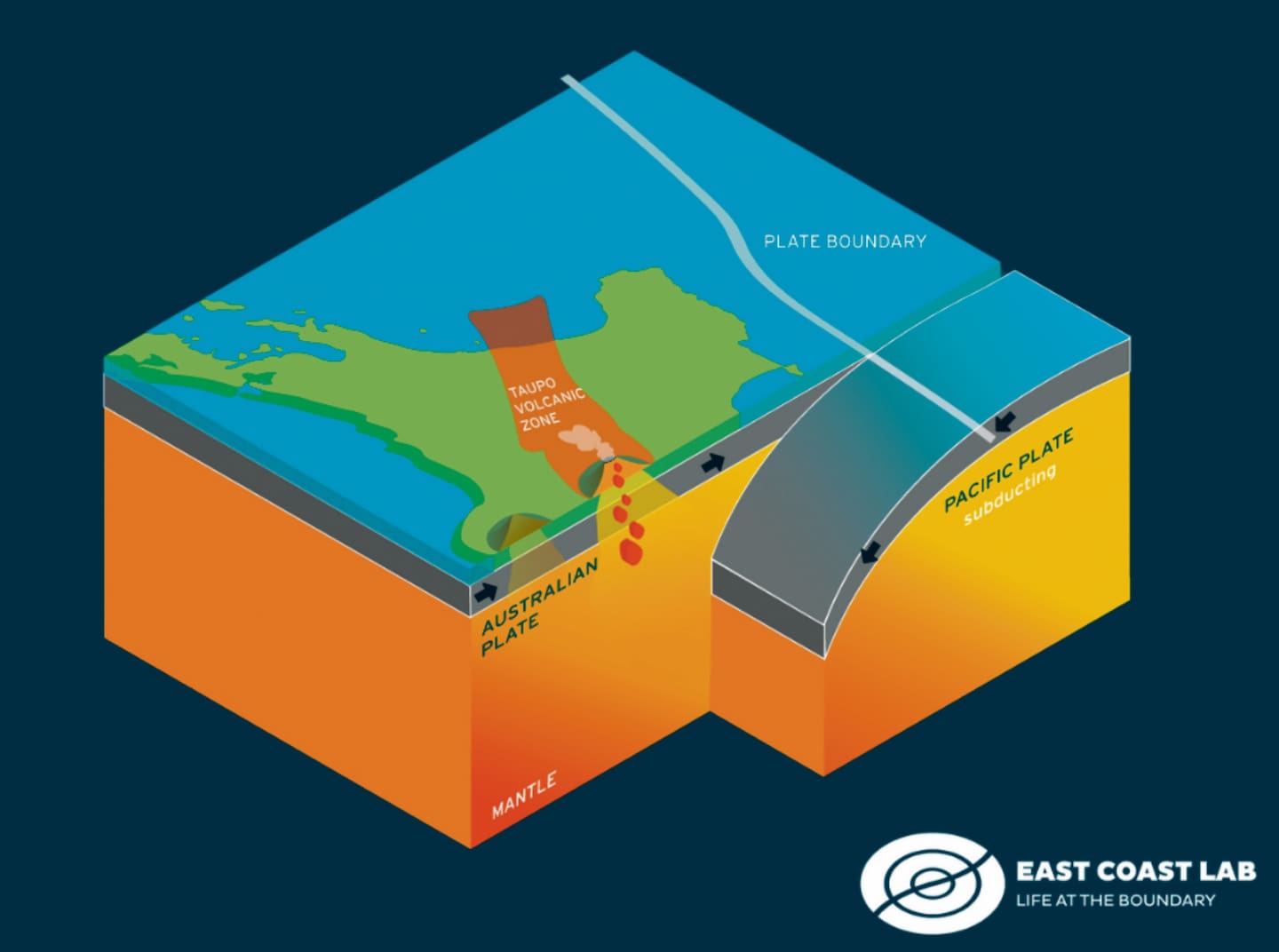Scientists have discovered what puts fire in the belly of a North Island volcanic region responsible for some of the planet’s most monstrous eruptions.
That turns out to be buried fluids released from within the Hikurangi Subduction Zone – the vast tectonic plate boundary that presents New Zealand’s largest natural hazard.
In a new study, scientists investigated magma-making processes deep beneath Ahi Tupua, a volcanic region stretching from Tokaanu to Kawerau.
Victoria University volcanologist Dr Simon Barker said this region is known to have erupted enormous amounts of magma – such as through giant prehistoric blows at the Taupō and Ōkataina caldera volcanoes.
Yet it hadn’t been clear just what drove an abnormal amount of magma deep in the earth – and why the region was so much more active than other volcanic zones in the world.
The answer, they found, lay in huge volumes of water being forced under the North Island, as the Pacific tectonic plate plunged – or subducted – beneath the Australian plate.
This trapped water was ultimately released into the Earth’s mantle, lying some 200km below New Zealand.
“These fluids are what drives partial melting of the mantle under the North Island and kickstarts the process of magma production,” Barker said.
The study team revealed this mechanism after building a catalogue of nearly 400 earthquake events and then using the data to tease out distribution patterns beneath Ahi Tupua.

The Hikurangi Subduction Zone is where the Pacific Plate dives beneath the Australian Plate. Scientists say this process is also forcing huge volumes of water into the Earth's mantle, to drive volcanism in the central North Island. Images / East Coast Labs
“By integrating this dataset with existing scientific literature, we identified connections between deep earthquakes and their associated fluids to magmatism in Ahi Tupua,” study lead author Olivia Mark said.
Barker said the findings, published in scientific journal JGR Solid Earth, enabled scientists to home in on telltale chemical signatures to answer more major questions.
“We can now start to model the composition of the fluids that are being released – and look at what parts of Ahi Tupua are currently experiencing the most melting.”
The study’s author, Professor John Townend, said the results were also crucial for better understanding New Zealand’s long-term geological evolution, as well as our geothermal resources and natural hazards.
“It’s fundamental science that matters to New Zealand,” Townend said.
The findings come after scientists last month published research linking shaking from 2016′s massive Kaikōura earthquake to unrest at the Taupō volcano – showing that volcanoes and earthquakes could be intrinsically linked.
Other recent studies, meanwhile, have pointed to the role of trapped fluids in lubricating the subduction zone through slow-motion earthquakes – with important implications for predicting its next big cataclysm.
Scientists have given one-in-four odds of a magnitude-8.0 event occurring beneath the North Island in the next 50 years.
Jamie Morton is a specialist in science and environmental reporting. He joined the Herald in 2011 and writes about everything from conservation and climate change to natural hazards and new technology.
Take your Radio, Podcasts and Music with you









